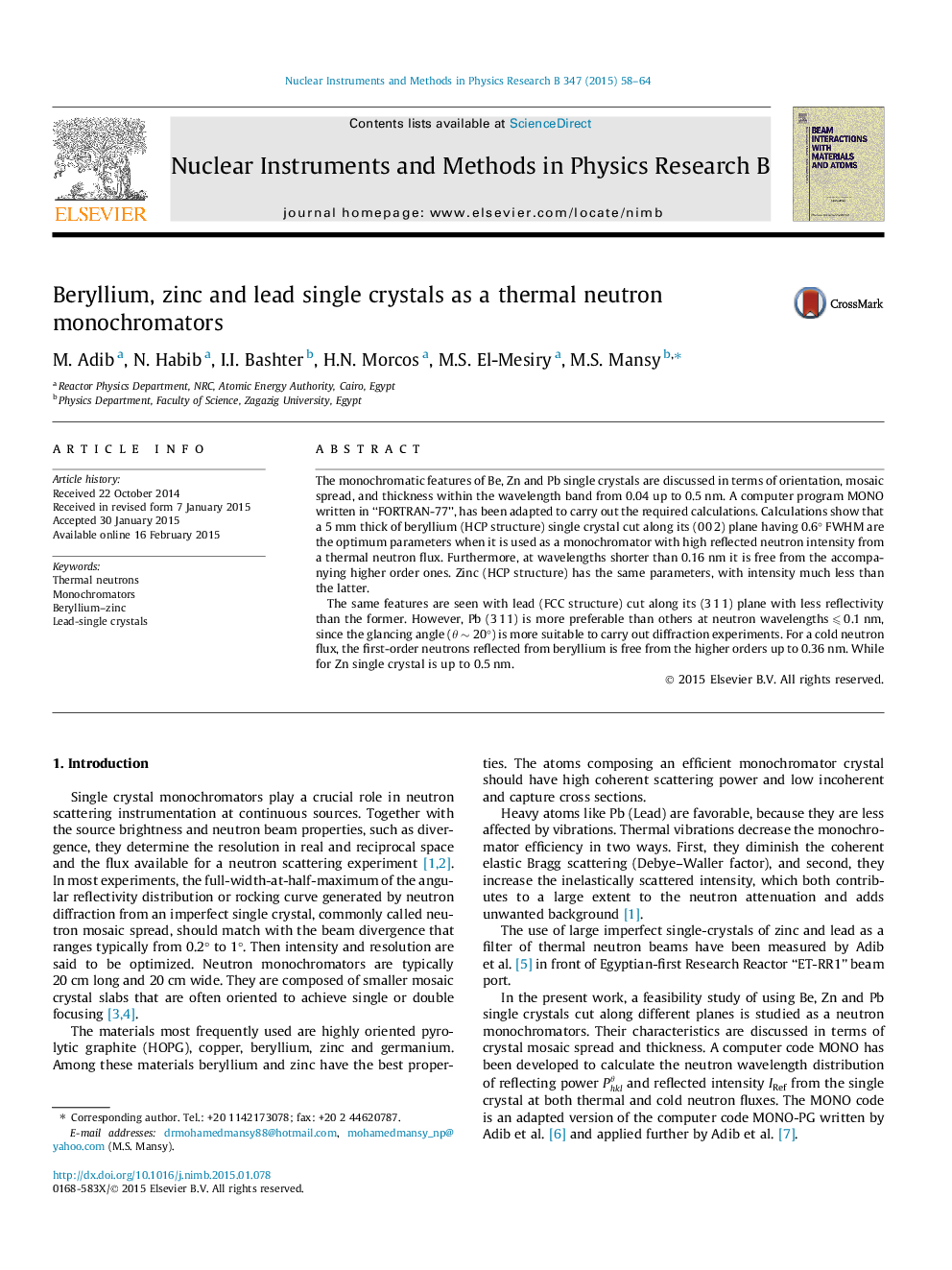| Article ID | Journal | Published Year | Pages | File Type |
|---|---|---|---|---|
| 1680440 | Nuclear Instruments and Methods in Physics Research Section B: Beam Interactions with Materials and Atoms | 2015 | 7 Pages |
•Monochromatic features of Be, Zn and Pb single crystals.•Calculations of neutron reflectivity using a computer program MONO.•Optimum mosaic spread, thickness and cutting plane of single crystals.
The monochromatic features of Be, Zn and Pb single crystals are discussed in terms of orientation, mosaic spread, and thickness within the wavelength band from 0.04 up to 0.5 nm. A computer program MONO written in “FORTRAN-77”, has been adapted to carry out the required calculations. Calculations show that a 5 mm thick of beryllium (HCP structure) single crystal cut along its (0 0 2) plane having 0.6° FWHM are the optimum parameters when it is used as a monochromator with high reflected neutron intensity from a thermal neutron flux. Furthermore, at wavelengths shorter than 0.16 nm it is free from the accompanying higher order ones. Zinc (HCP structure) has the same parameters, with intensity much less than the latter.The same features are seen with lead (FCC structure) cut along its (3 1 1) plane with less reflectivity than the former. However, Pb (3 1 1) is more preferable than others at neutron wavelengths ⩽ 0.1 nm, since the glancing angle (θ ∼ 20°) is more suitable to carry out diffraction experiments. For a cold neutron flux, the first-order neutrons reflected from beryllium is free from the higher orders up to 0.36 nm. While for Zn single crystal is up to 0.5 nm.
